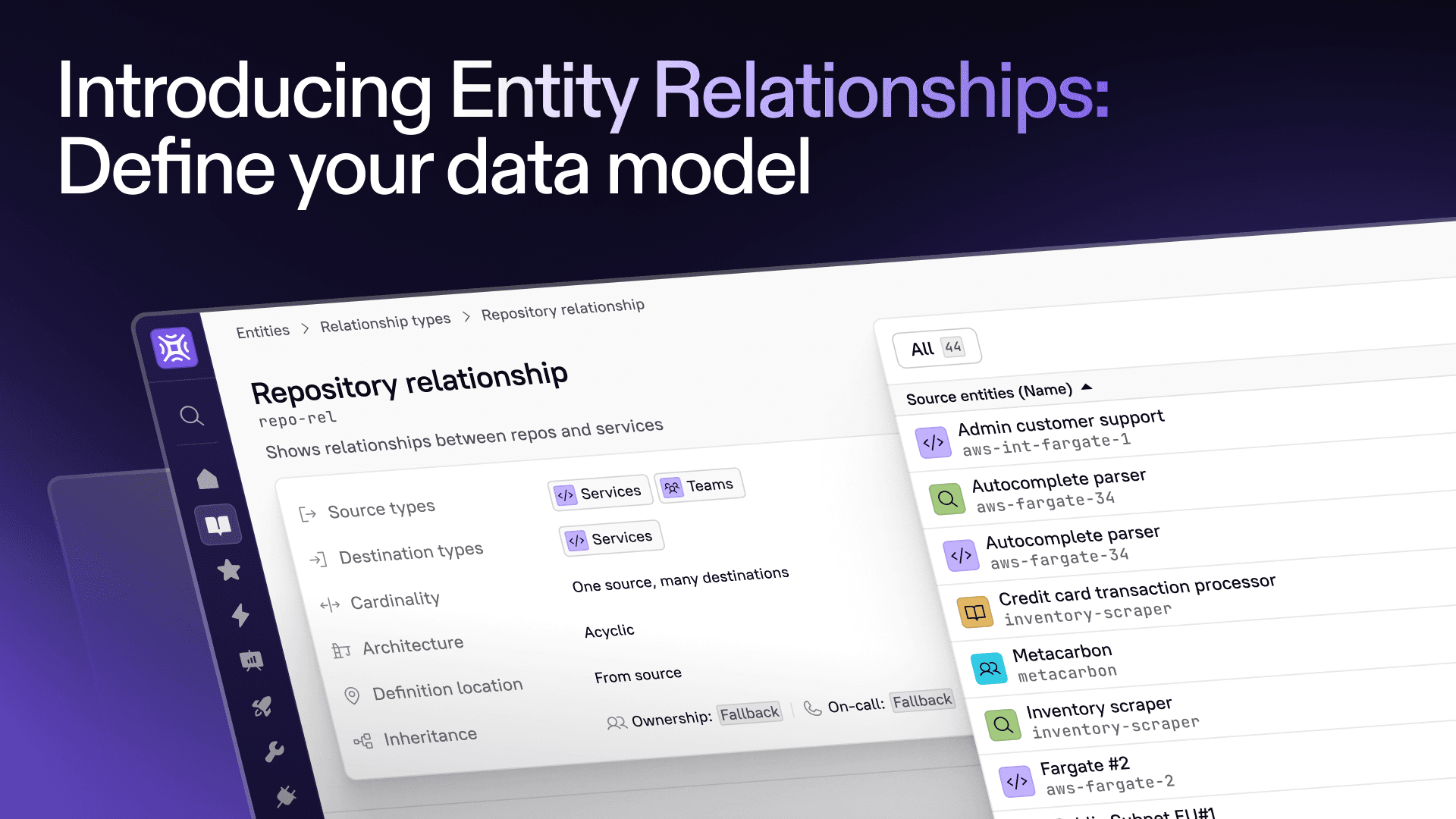Today we’re thrilled to announce the launch of Entity Relationships, a powerful new capability that gives you more flexibility and control over the data model in your IDP. By allowing you to create custom relationships between entities in your catalog, you can model your internal developer portal to accurately reflect your own organization’s taxonomy, letting you better answer deep questions about your environments, releases, packages, and beyond.
A flexible approach for your catalog

Entity Relationships adds native support for creating relationships between entities, similar to our out-of-the-box team hierarchy, domain hierarchy, and dependency relationships.
Here are some examples of the types of relationships you might create with Entity Relationships:
AWS accounts to AWS resources: applying ownership to AWS resources based on the account they’re a part of
Service to its running versions: Whether you run in a multi-tenant setup or have multiple environments, represent each version or environment as individual entities and relate them back to the logical service
Let’s take a more complex example: Imagine you maintain QA, staging, and production environments each bound to a specific release. Within each release, you can drill into the versions that represent distinct builds of your services. From any version, you can explore the individual packages it bundles, and from a vulnerable package you can traverse back up to the parent service, release or environment at risk. All of this can be modeled through Entity Relationships, creating a powerful navigable graph in your Catalog.
Building relationships
Building these connections is straightforward. It can be as simple as defining a set of source and destination entity types, for example “service” to “runtime” and “environment”. You can also control the cardinality of the relationship, like “one service can have many runtimes”. For even more control, you can enforce the relationship shape as cyclical, like dependencies, or hierarchical, like an org chart.
In order to deliver a great experience to your end users, you can even define the human readable names for the source and destination entities, like “Services” and “Runtimes”.


Every new relationship type you create shows up alongside the defaults, so you can mix and match “environment to release,” “release to version,” “version to package,” “package to vulnerability,” or any combination you need. As you navigate, relationships expose summary metrics and context for each linked entity, empowering you to surface insights inside the Cortex UI.

Entity types & reporting
Entity Relationships will also supercharge Scorecards and Bird's eye reporting by allowing you to group by any relationships that you create and drill down into them.
You can author a scorecard rule that highlights any environment exposing a critical CVE or build a dashboard that counts how many releases include packages with known issues.
Ready to model your data more effectively?
Entity Relationships empowers you to model any entity and its connections exactly as you envision, fully extending the capabilities of Cortex’s built-in schema. This translates to streamlined operations, fewer manual processes, and accelerated insights for your engineering and platform teams.
Entity Relationships is available in beta for all Cortex customers. Reach out to your Customer Success Manager for access or visit our documentation for step-by-step guides and examples.
Want to see it in action? Schedule a demo and ask about Entity Relationships.
